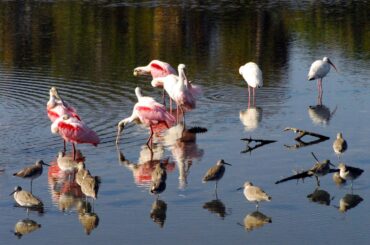Have you ever glanced at a sparrow and thought it looked like any other small bird? What if I told you there’s a sparrow that stands out from the crowd? Curious to know what sets the red-headed sparrow apart?
Red-headed sparrows are not your everyday backyard visitors. These vivid, fiery-headed birds offer a visual treat that defies the otherwise muted tones of their sparrow red bird cousins. While most sparrows might blend into the background, the red-headed variety grabs your attention.
Their standout feature – the redhead – can range from a bright crimson to a deeper maroon, acting like a spotlight in the birding world. Birdwatchers consider the sighting of a red-headed sparrow a momentous event. These unique birds add an element of surprise and excitement to the hobby.
They add a splash of color to your bird-watching journal and challenge even the most experienced birdwatchers to understand their distinct behaviors and habitats. Next time you’re out with your binoculars, keep an eye out; you might just spot this intriguing, show-stopping sparrow.
13 Red-Headed Sparrow Species
Looking for a deeper dive into the world of sparrow red head? You’ve come to the right place! We’ll explore 13 different species!
Tepui Brushfinch (Arremonops rufivirgatus)
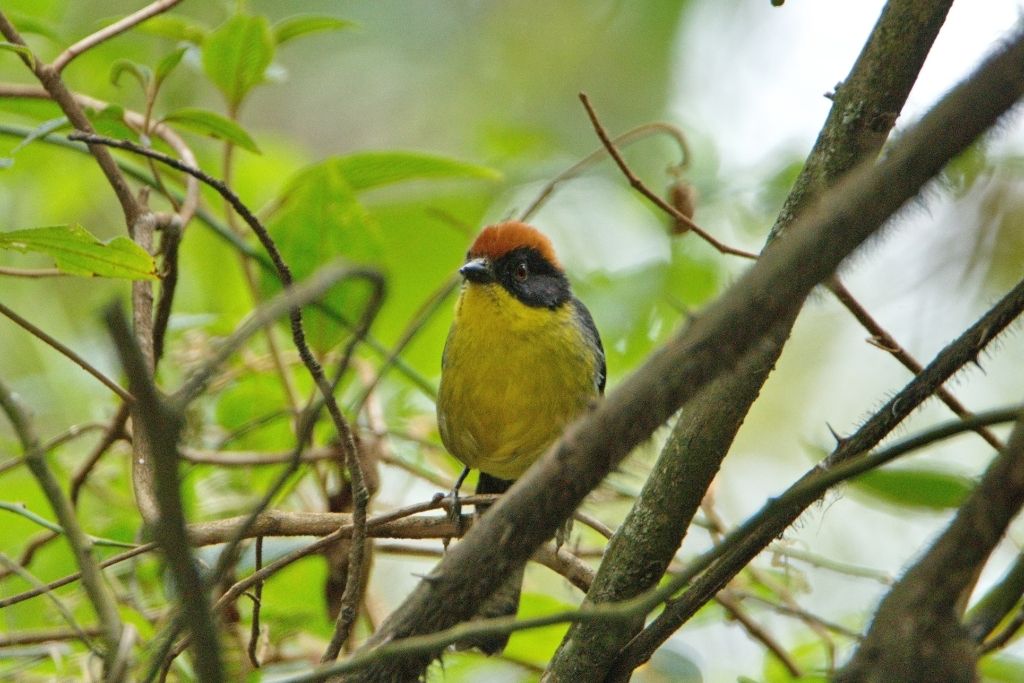
The tepui brushfinch catches your eye with its striking red crown. Contrasting with its muted brown body, the head seems almost like a beacon. This pop of color makes it easily distinguishable from other brushfinches.
You’ll usually find this bird in South American highlands, specifically around Venezuela’s tepuis or flat-topped mountains. It’s not one for travel, as the tepui brushfinch rarely migrates. If you want to spot one, you’ll have to venture into its high-altitude home.
While roaming these elevated landscapes, the tepui brushfinch prefers the company of its own kind. Social but not overly gregarious, these birds often form small groups. They’re known for their subdued chirps and quick flights from bush to bush.
Chestnut Sparrow (Passer eminibey)
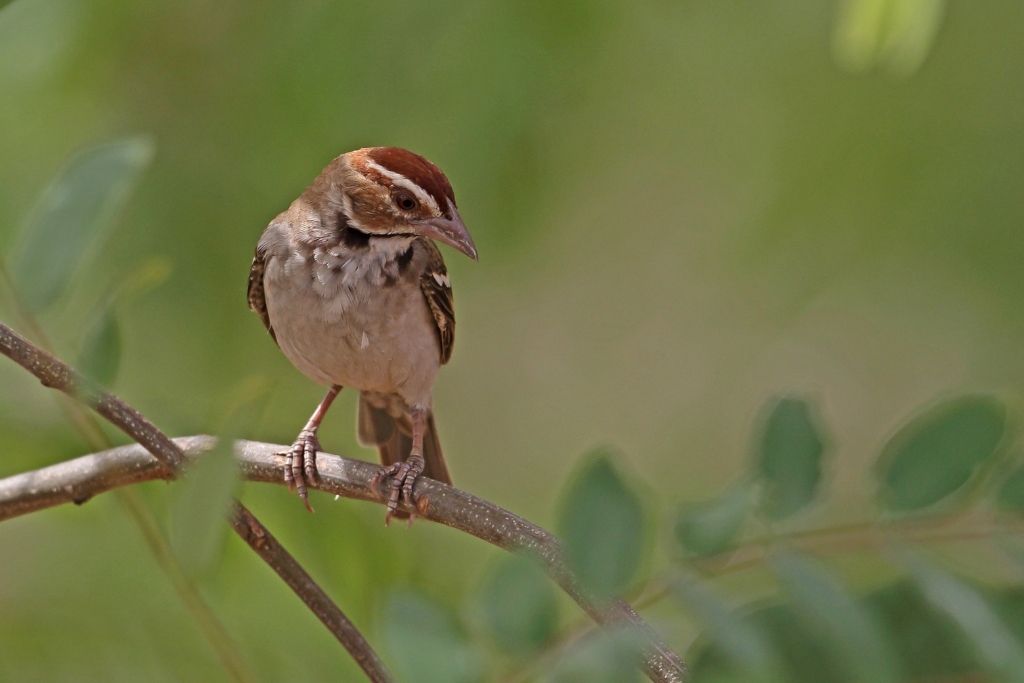
Meet the chestnut sparrow, a bird that’s hard to ignore with its deep chestnut-colored head. But that’s not the only thing you’ll notice; this sparrow boasts a sleek, black bib under its beak. Compared to other sparrows, this one’s a showstopper.
Grassy plains and open savannas are this bird’s go-to hangouts. It’s not a fan of dense forests or crowded urban areas. Open spaces give it room to forage and socialize.
Africa is this sparrow’s stomping ground, particularly in regions like Ethiopia and Kenya. Unlike some other species, chestnut sparrows usually stay put year-round. Migration? Not for them; they’re homebodies who prefer the familiar turf.
As social birds, they often gather in flocks. They forage together and sometimes mix with other sparrow species. Though not particularly loud, their calls are distinctive, adding a unique soundtrack to the African savanna.
Green-Tailed Towhee (Pipilo chlorurus)

A bird that flips the script on what you expect from a sparrow. Instead of a redhead, this one sports a greenish tail that’s hard to miss. Add the warm, rufous cap, like a walking autumn leaf.
You’ll usually find this bird in the shrubby areas of the American West. Sagebrush and junipers make up its favorite haunts. It enjoys the understory, where it can forage in peace.
Most of the green-tailed towhees call the Western U.S. home, but come winter, many head south. They often fly to warmer areas, like Mexico, returning in the spring. If you’re a birdwatcher in those regions, keep your eyes peeled during those seasons.
When it comes to behavior, these birds are on the shy side. They’re not big on social gatherings and prefer to stick close to cover. While you may hear their chattering calls, spotting one takes a bit of luck and a keen eye.
Ochre-Breasted Brushfinch (Atlapetes semirufus)
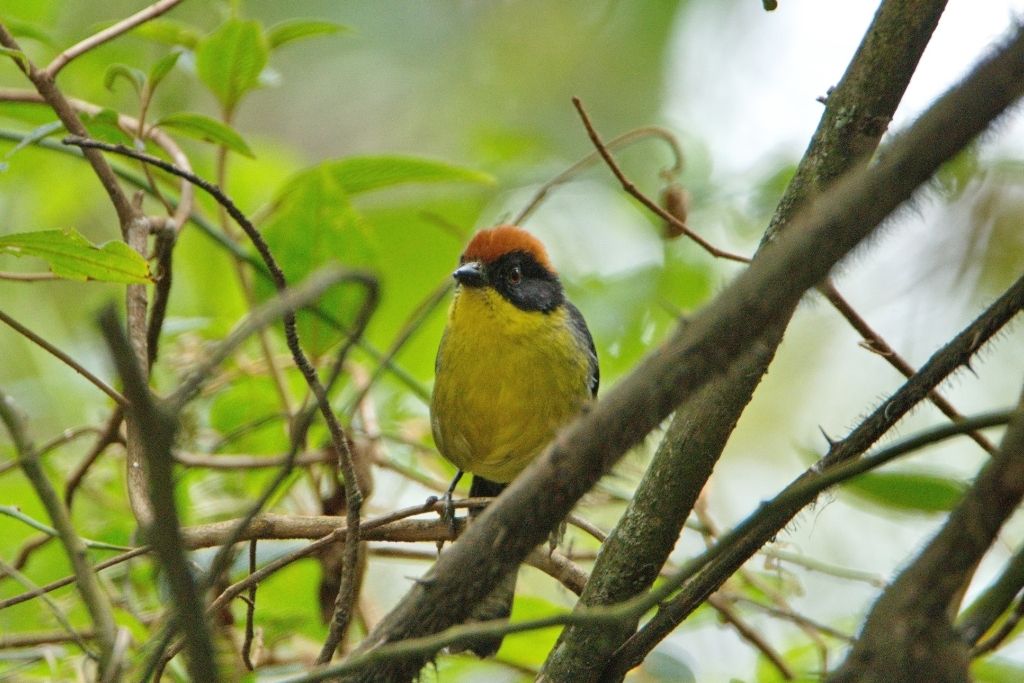
Get to know the ochre-breasted brushfinch, a bird that doesn’t conform to sparrow norms. Unlike its red-headed cousins, this one showcases an ochre-colored breast that stands out. Paired with a darker head and back, it’s a real eye-catcher.
This sparrow thrives in subtropical and tropical regions. Think cloud forests and humid lowlands. It’s where they find their food and build their nests.
The ochre-breasted brushfinch calls countries like Colombia and Ecuador home. As for migration, these birds stay where the climate suits them, remaining in their preferred habitats year-round.
Although not the life of the party, these sparrows are social enough to form small groups. They often mix with different species when foraging. Curious and nimble, they dart about the understory, looking for seeds and insects, their distinctive calls filling the air.
Chipping Sparrow (Spizella passerina)
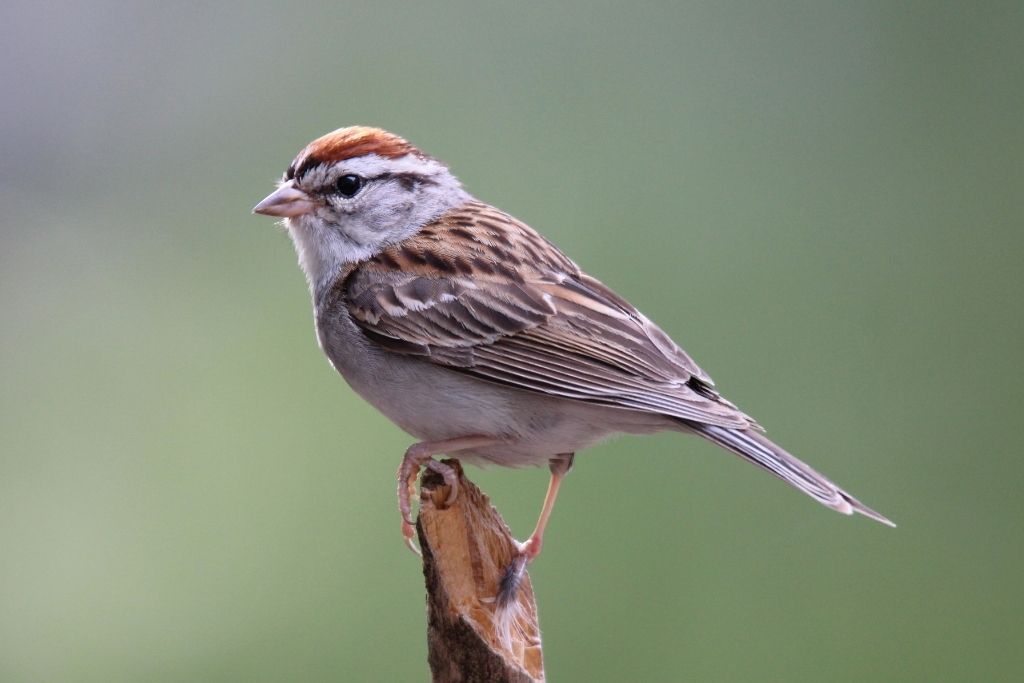
Meet the chipping sparrow, a little bird with a big personality. With a rust-colored cap and a simple, unassuming gray chest, it’s no wonder birders love spotting this guy. His colors make it seem like he’s permanently dressed for autumn.
Have you ever walked through a city park or suburban garden? You’ve probably crossed paths with a chipping sparrow. These little guys love spaces where humans hang out. Sure, they enjoy forests and grasslands, but they’re also comfy sharing space with people.
You’ll find this sparrow almost everywhere in North America. From Canada to Mexico, they’ve got the continent covered. They pack up and head south when the cold months roll in. By spring, they’ve returned to the north, where they sing their hearts out.
Sociable but not intrusive, chipping sparrows have a knack for relationship balance. They often form flocks, especially in the winter, but keep a polite distance from each other when feeding. Their high-pitched calls create a sort of musical backdrop wherever they go. It’s hard not to smile when you hear a group of them chattering away.
American Tree Sparrow (Spizelloides arborea)

A charming little bird that doesn’t spend much time in trees. Sporting a rusty cap and a dark eye-line, this sparrow also has a unique chest spot that sets it apart. Picture a small dot, almost like a beauty mark!
In the wild, you’ll often find these sparrows in open fields and tundra. They enjoy brushy areas and aren’t too keen on dense forests. A dash of human activity doesn’t bother them much either; you might even spot them in your backyard.
This bird travels quite a bit. The American tree sparrow heads to Northern Canada and Alaska during summer to breed. Come winter, they migrate south to Central and Eastern United States. If you’re out bird watching, season matters when spotting this one.
A chatter here and a chirp there, these sparrows aren’t shy. They’ll form small flocks, often mixing with other sparrow species. Birdwatchers can enjoy these charming wanderers’ social calls, a mix of musical notes and simple chirps.
Swamp Sparrow (Melospiza georgiana)
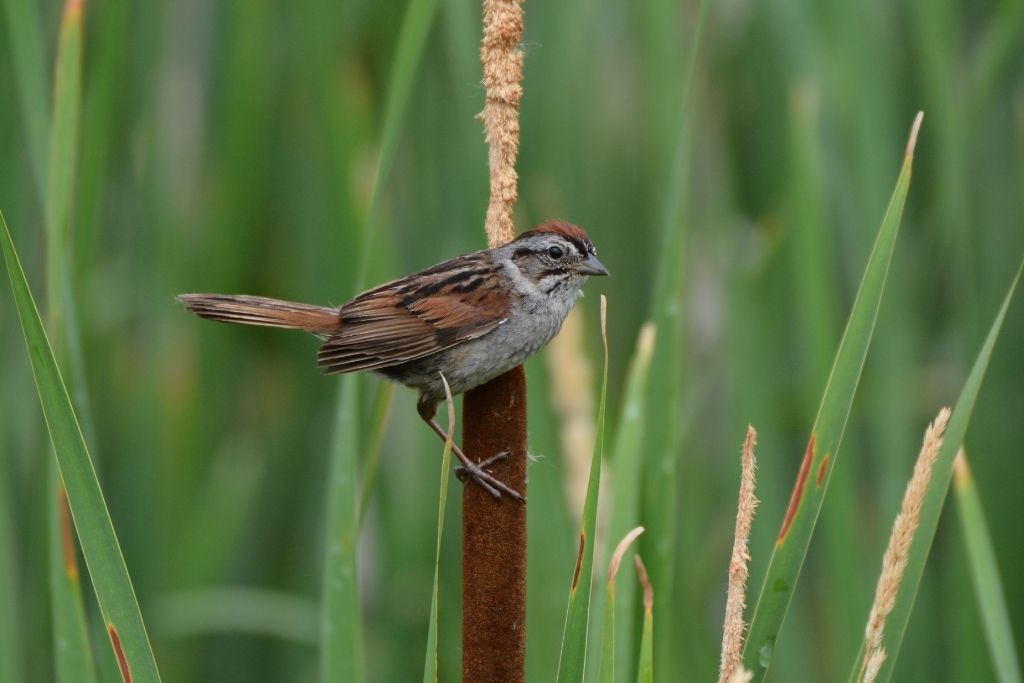
This little guy turns heads with its rusty wings and sharp, grayish face. While it might not have the vibrant colors of some of its cousins, its subtle beauty still captivates birdwatchers.
The name gives it away – these sparrows love swamps. Wetlands, marshy areas, and reedy ponds also make the list. They like spots where water and vegetation mingle, creating the perfect setting for both nesting and feeding.
Covering a vast range, swamp sparrows can be found from the northern parts of Canada to the Southeastern United States. Many migrate to escape harsh winters, opting for more moderate climates until they return for breeding.
Socializing doesn’t top their to-do list, but you’ll often find them in small groups. While they don’t seek out other species, they’re not exactly loners either. Listen carefully; you might hear their slow, musical trills, a soothing soundtrack to any swamp or wetland visit.
Somali Sparrow (Passer castanopterus)
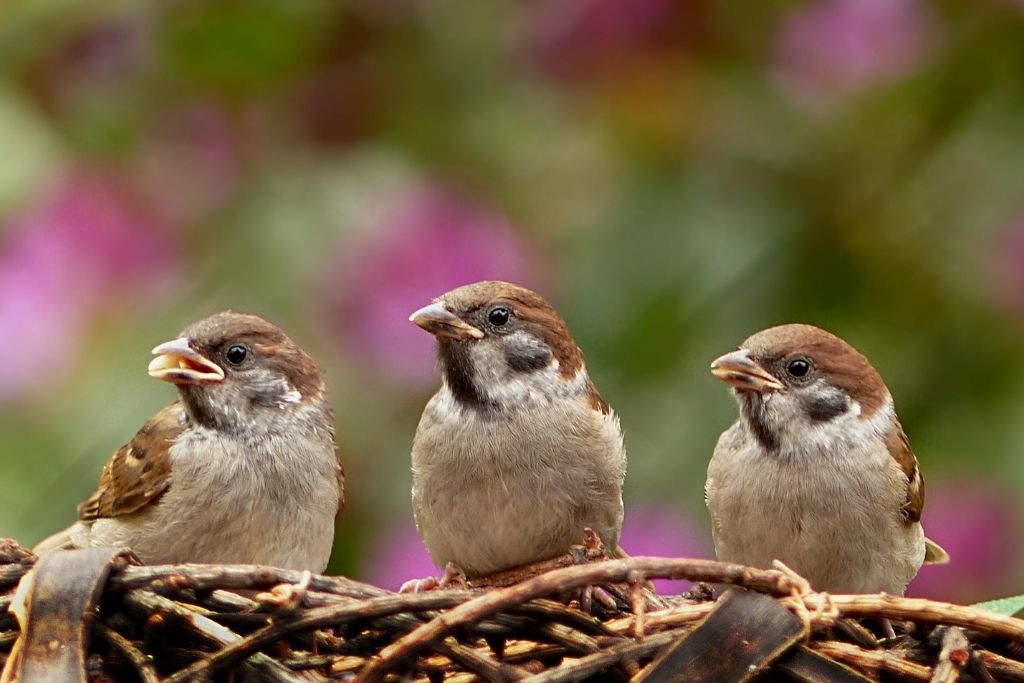
A unique bird with distinct features that make it stand out. Sporting a chestnut crown and a striking black face mask, it’s not your average sparrow in terms of looks.
As the name suggests, these sparrows call Somalia home, along with neighboring countries like Ethiopia and Kenya. They favor arid and semi-arid regions, often dwelling in acacia trees and shrublands. These hardy little birds don’t mind the challenging conditions of their habitat.
When it comes to migration, Somali sparrows aren’t known to embark on long journeys. They tend to stick around their preferred regions year-round, making them a constant presence in their arid homes.
Social but not overly gregarious, you’ll often spot them in small groups or pairs. They’re not big on mixing with other species, preferring the company of their kind. Keep an ear out for their melodious chirping, which is often a delightful addition to the soundscape of their desert habitats.
Spanish Sparrow (Passer hispaniolensis)
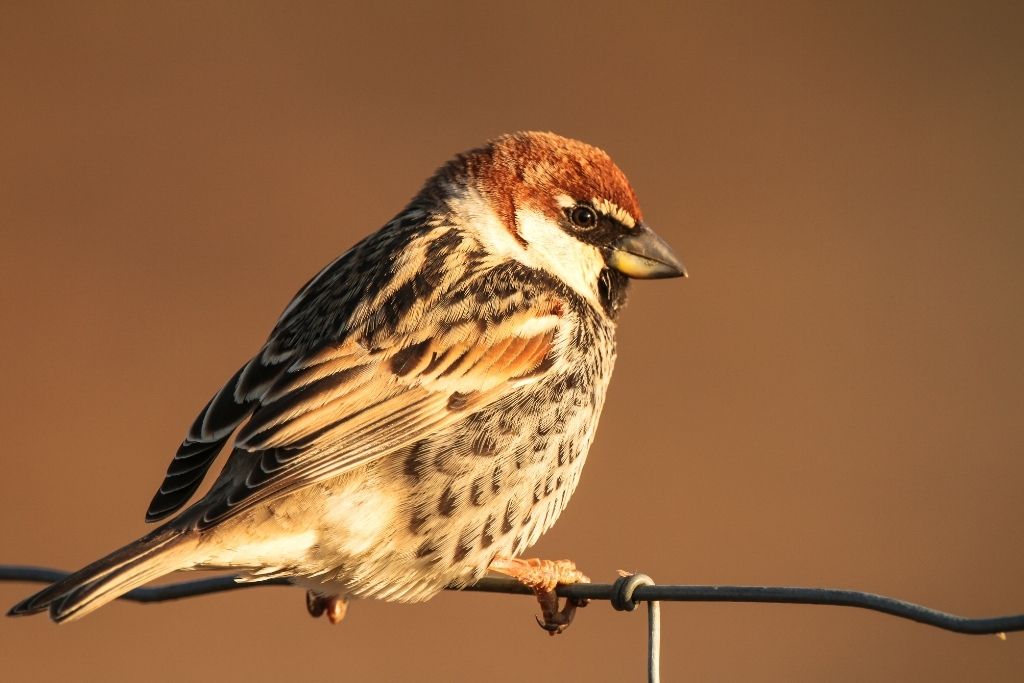
This sparrow stands out with its chestnut crown and a speckled chestnut back. While it may not have the boldest colors, it still turns heads.
These sparrows feel right at home in the warm embrace of the Mediterranean. You’ll find them in scrubby areas, farmlands, and urban spaces. Unlike some sparrows, they don’t shy away from human company, often nesting in buildings and houses.
Their range stretches from Southern Europe to parts of Asia and North Africa. When it comes to migration, they’re not the globe-trotting type. Many Spanish sparrows stay put in their favored regions year-round.
Social birds enjoy the company of their fellow sparrows. You’ll often spot them in flocks, chatting in their cheerful chirps. Their friendly nature makes them a delightful addition to the birdlife in their sunny Mediterranean habitats.
Eurasian Sparrow (Passer domesticus)
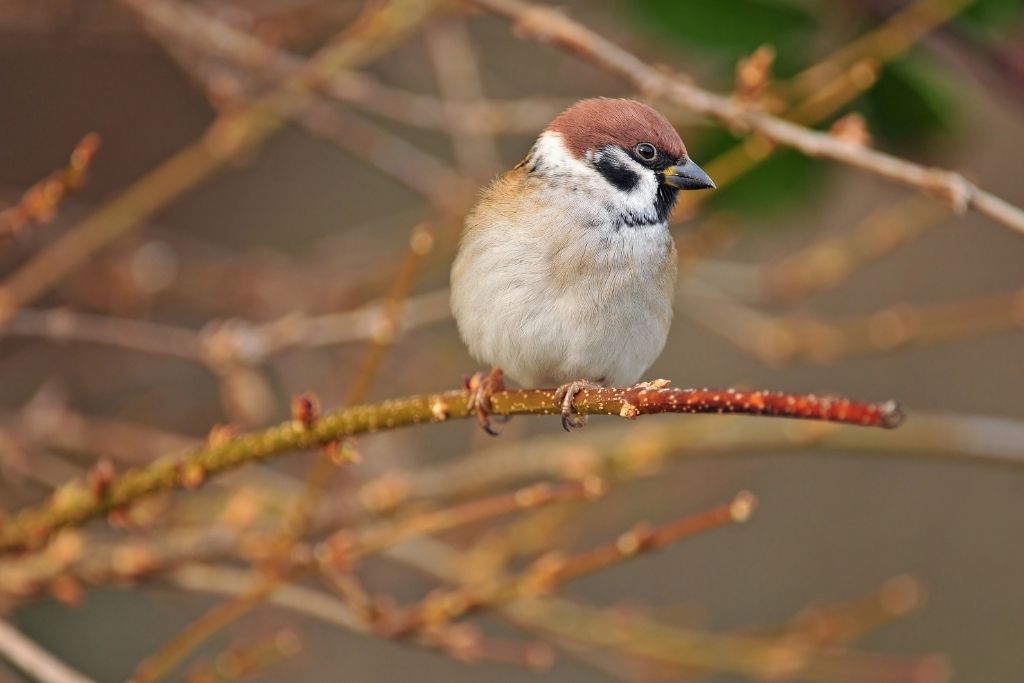
The Eurasian sparrow is a bird quite familiar to many. With its brown and gray plumage, it doesn’t boast flashy colors, but its simplicity holds its charm.
Eurasian sparrows are true urbanites. They’re comfortable in towns and cities, making their homes in buildings and nesting in the nooks and crannies of human structures. You’ll often spot them foraging for crumbs in parks and plazas.
These sparrows have a vast geographic range from Europe to Asia, living in various habitats, from city streets to rural farmlands. When it comes to migration, many of them stick around their chosen territories throughout the year. Some do embark on short-distance migrations in search of milder climates.
As social birds, Eurasian sparrows thrive in groups. You’ll see them flocking together, chattering and chirping. Their lively interactions and constant presence in urban environments make them a part of daily life for many people.
Cinnamon Ibon (Hypocryptadius cinnamomeus)
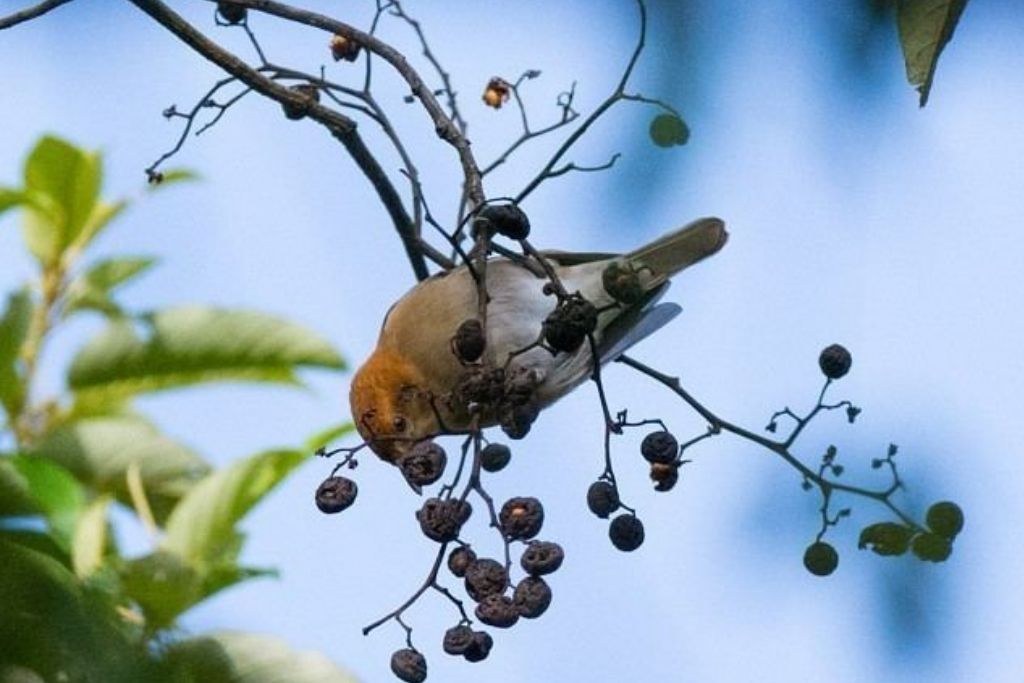
The cinnamon ibon adds warmth to its surroundings with its cinnamon-colored plumage. With its striking chestnut-brown body, it’s hard to miss in the forests of the Philippines.
These birds find their sanctuary in the lush, evergreen forests of the Philippines. They thrive in the canopy, flitting among the leaves and branches. These forests provide their ideal habitat, with plenty of insects and fruits to feast on.
The cinnamon ibon is quite the homebody, sticking to the Philippines and not bothering with migration. They’re not the most social of sparrows, often foraging alone or in pairs. They are known for their musical calls, which can be heard echoing through the forest, especially during their breeding season.
While their behavior tends to be more solitary, the cinnamon ibon’s unique appearance and song make it a special part of the rich avian tapestry of the Philippines.
Russet Sparrow (Passer cinnamomeus)
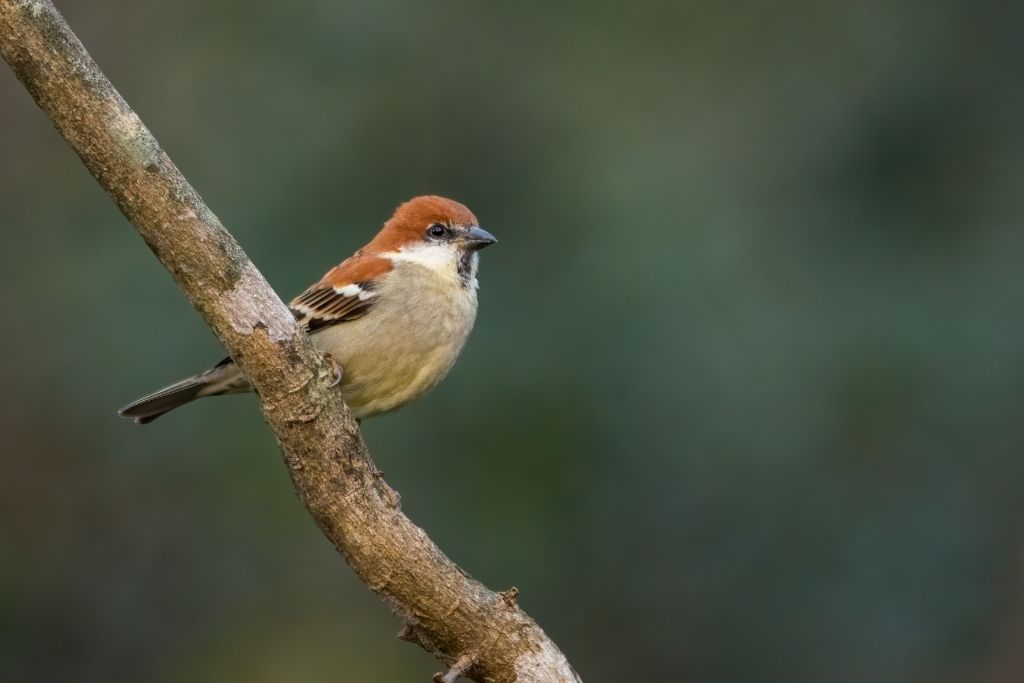
The russet sparrow is a charming bird with its unique appeal. It boasts a russet crown and nape, setting it apart from other sparrows. This russet coloring gives it a distinct, warm look.
These sparrows prefer a mix of open woodlands, grasslands, and shrubbery. They like a bit of cover but also enjoy open spaces. You’ll often find them in the foothills and mountains of Asia, especially in countries like India, China, and Nepal.
When it comes to migration, some russet sparrows do take short trips to escape harsh winter weather. They move to lower elevations to find more temperate conditions. Many of them remain year-round residents in their chosen territories.
In terms of social behavior, they often gather in small flocks, and they’re known for their soft, musical calls. Their unassuming charm and lovely songs make them a delightful addition to the birdlife of the regions they inhabit.
Slaty Brushfinch (Atlapetes schistaceus)
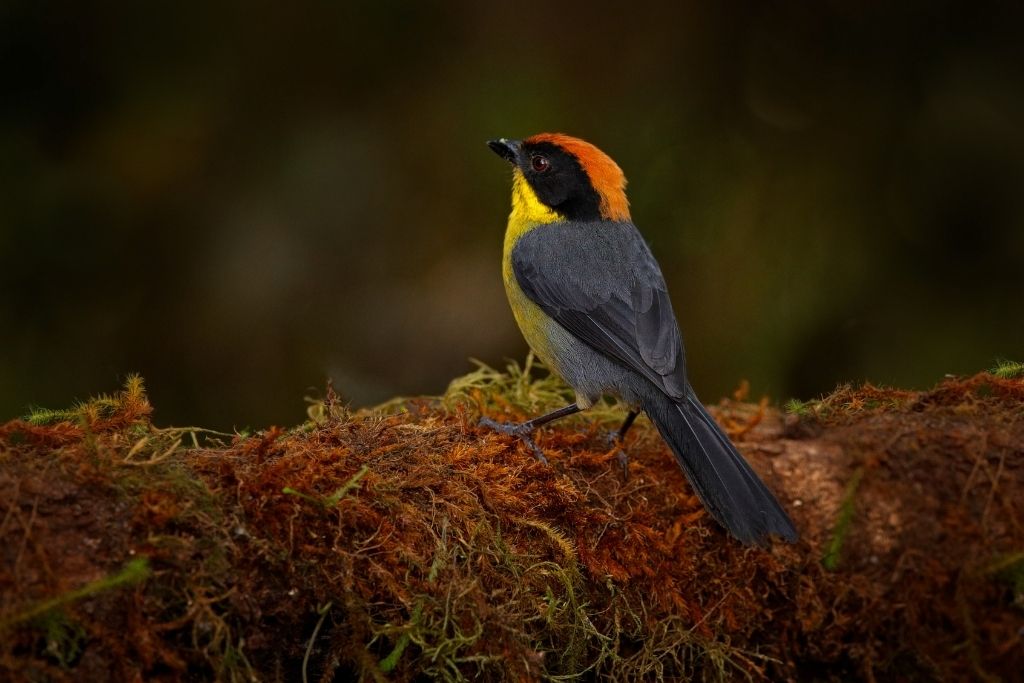
The slaty brushfinch is a striking sparrow with its unique charm. Sporting a slaty-blue plumage, it stands out in the bird world. This blue hue and a distinctive white eye-ring give it a captivating appearance.
These brushfinches prefer dense, shrubby habitats in the Andes Mountains of South America. They make their homes in the lush greenery, from cloud forests to humid woodlands. These habitats provide both shelter and food, making them ideal for the slaty brushfinch.
As for their range, you’ll mostly find these birds in countries like Colombia, Ecuador, and Peru, all along the Andes. When it comes to migration, they are primarily non-migratory birds, staying put in their preferred territories throughout the year.
While they might not be the most sociable birds, you’ll often find them in small family groups or pairs. Their calls are soft and melodious, adding to the symphony of sounds in their mountainous habitats. The slaty brushfinch’s unique appearance and subdued charm make it a cherished member of the avian community in the Andes.
| Type of Red-Headed Sparrow | Physical Features |
| Tepui Brushfinch | Bright redhead and muted brown body. |
| Chestnut Sparrow | Rusty cap and black bib under the beak. |
| Green-Tailed Towhee | Greenish tail and rufous cap. |
| Ochre-Breasted Brushfinch | Ochre-colored breast and dark head and back. |
| Chipping Sparrow | Rusty cap and gray chest. |
| American Tree Sparrow | Rusty cap and eye-line, with a simple gray chest. |
| Swamp Sparrow | Rusty wings and sharp, grayish face. |
| Somali Sparrow | Chestnut crown and black face mask. |
| Spanish Sparrow | Chestnut crown and speckled chest. |
| Eurasian Sparrow | Brown and gray plumage. |
| Cinnamon Ibon | Cinnamon-colored plumage. |
| Russet Sparrow | Russet crown and nape. |
| Slaty Brushfinch | Slaty-blue plumage and white eye-ring. |
Birdwatching Tips
Here are some birdwatching tips to help you spot and observe red-headed sparrows:
- Know Their Habitat: Research the specific habitats where red-headed sparrows are known to dwell. Understanding their preferred environments will increase your chances of spotting them.
- Timing is Key: Early mornings and late afternoons are often the best times to go birdwatching. Many sparrows are more active during these hours.
- Quiet Approach: Approach their habitat quietly and avoid sudden movements or loud noises. Sparrows can be easily startled, so a calm and patient approach is crucial.
- Use Binoculars: Invest in a good pair of binoculars to closely examine these tiny birds. It can make a significant difference in your bird-watching experience.
- Learn Their Calls: Familiarize yourself with the distinctive calls of red-headed sparrows. Knowing their vocalizations can help you locate them even when hidden from view.
- Field Guide: Carry a field guide or use a bird identification app to help you identify different species of sparrows, including the red-headed ones.
- Join Bird-watching Groups: Consider joining local bird-watching groups or communities. Experienced birders can share valuable insights and tips about where and when to find red-headed sparrows in your area.
- Be Patient: Birdwatching often requires patience. Sometimes, you may need to wait quietly for the sparrows to escape their hiding spots.
- Respect Their Space: Remember that you are a guest in their habitat. Avoid disturbing nests or getting too close to the birds, which can cause stress and disrupt their natural behavior.
- Record Your Observations: Keep a journal or use a bird-watching app to record your observations. Note the date, location, and any exciting behaviors you witness.
Final Thoughts
Understanding redhead sparrow differences enhances our knowledge of avian diversity and admiration for these distinctive birds. Birdwatching is more interesting when you recognize and appreciate each species’ charm and beauty.
Preserving the habitats and environments where these redhead sparrows thrive is crucial for survival. Conservation efforts are vital to ensure that future generations can continue to enjoy the sight of these captivating birds. By raising awareness and supporting initiatives to protect their habitats, we can contribute to preserving these avian wonders.
FAQs
What is the Rarest Sparrow?
The rarity of sparrow species can vary, but some less common sparrows include the ochre-breasted brushfinch and the cinnamon ibon.
What Small Bird Has a Red Spot on its Head?
Among red-headed sparrows, the chestnut sparrow is known for having a distinct rusty cap resembling a red spot on its head.



